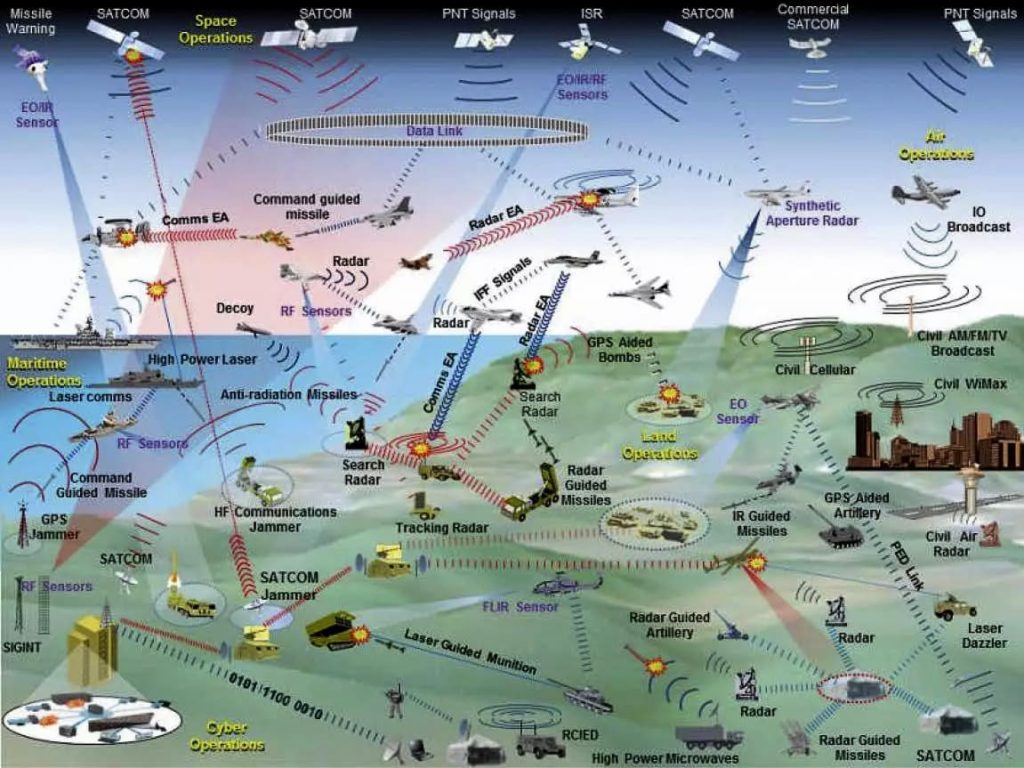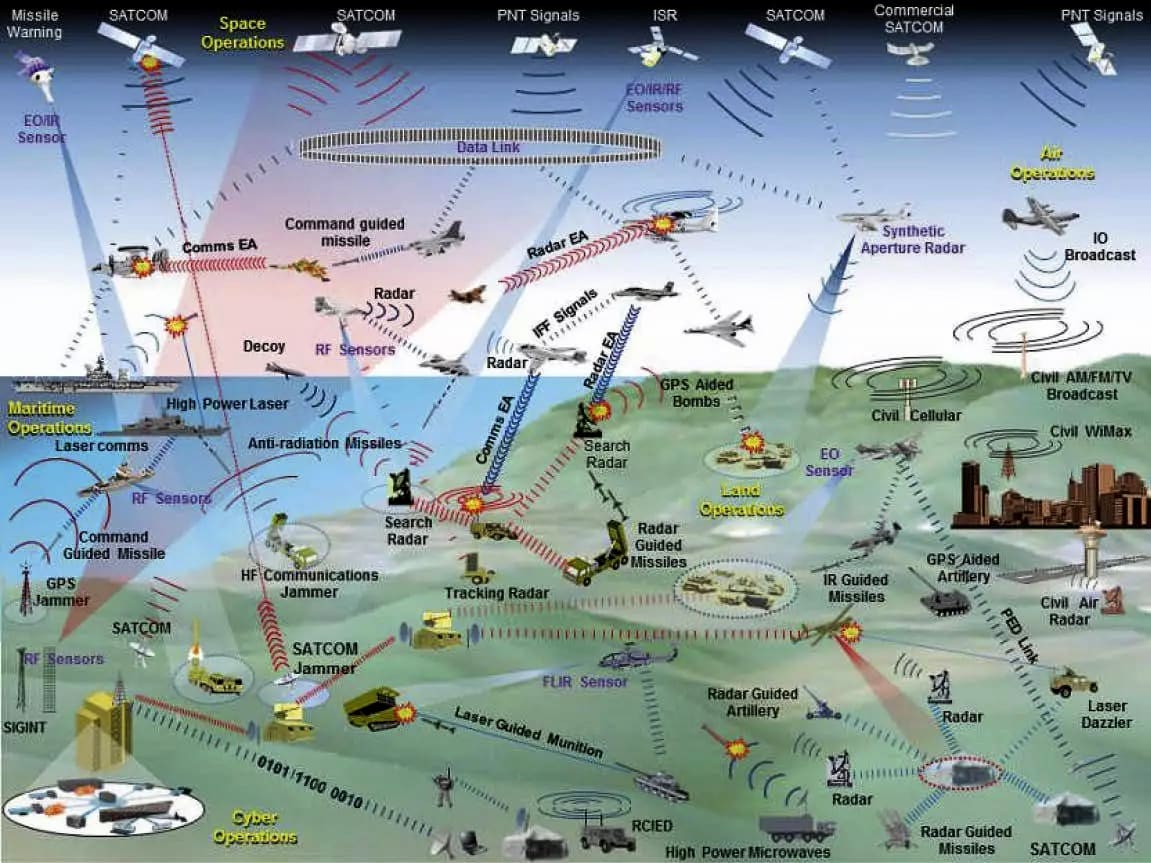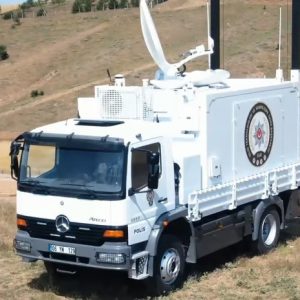Russian-Ukranian conflict shows us “Electronic Warfare Can Counter Russian Drones and Missiles”. The utilization of electronic warfare (EW) has emerged as a critical component in countering the growing threat posed by Russian drones and missiles. As adversaries continue to develop and deploy advanced unmanned aerial vehicles (UAVs) and missile systems, it has become imperative for military forces to employ sophisticated EW techniques to neutralize these threats effectively. In this article, we delve into the intricacies of electronic warfare and explore how it can be leveraged to mitigate the capabilities of Russian drones and missiles.

Understanding Electronic Warfare
Electronic warfare encompasses a broad spectrum of activities aimed at disrupting, deceiving, or denying the enemy’s use of the electromagnetic spectrum. This includes jamming communications, radar, and other electronic systems and employing electronic deception techniques to mislead adversaries.
Countering Russian Drones
Russian drones, known for their advanced capabilities and versatility, present a formidable challenge to modern military forces. These UAVs are equipped with sophisticated sensors, communication systems, and weaponry, enabling them to conduct a wide range of missions, including reconnaissance, surveillance, and precision strikes.
To counter the threat posed by Russian drones, military forces employ a variety of electronic warfare techniques. One such method is electronic countermeasures (ECM), which involves jamming the communications and control signals used by the drones to navigate and operate effectively. By disrupting the UAV’s ability to receive commands or transmit data, ECM can effectively neutralize the threat posed by Russian drones, rendering them ineffective or causing them to crash.
Additionally, electronic warfare systems can be used to detect and track Russian drones, providing valuable intelligence to military commanders and enabling them to take proactive measures to neutralize the threat. Advanced radar and sensor systems, coupled with machine learning algorithms, allow for the rapid detection and identification of UAVs, enabling military forces to respond swiftly and decisively.
Mitigating the Threat of Russian Missiles
In addition to drones, Russian missile systems pose a significant threat to military forces around the world. These missiles, equipped with advanced guidance systems and capable of delivering both conventional and nuclear payloads, can potentially inflict devastating damage on enemy targets.
To counter the threat of Russian missiles, military forces rely on a combination of active and passive electronic warfare measures. Active measures include the use of anti-radiation missiles (ARMs), which are specifically designed to home in on and destroy enemy radar systems. By targeting the radars used to track and guide Russian missiles, ARMs can effectively disrupt their flight trajectories and render them ineffective.
Passive electronic warfare measures, such as electronic counter-countermeasures (ECCM), are also employed to enhance the survivability of military forces against Russian missile threats. ECCM techniques involve decoys, chaff, and other electronic countermeasures to confuse and deceive enemy missile guidance systems, making it difficult for them to lock onto and engage their intended targets.
The Role of Cyber Warfare
In addition to traditional electronic warfare techniques, cyber warfare has emerged as a critical component in countering the threat posed by Russian drones and missiles. Cyber attacks targeting the command and control infrastructure of UAVs and missile systems can disrupt their operations, degrade their effectiveness, and even cause them to malfunction or self-destruct.
By infiltrating enemy networks, exploiting vulnerabilities, and launching targeted cyber attacks, military forces can gain a significant advantage in the battle against Russian drones and missiles. Advanced cyber warfare capabilities, coupled with robust electronic warfare systems, form a formidable defense against the evolving threats posed by adversarial forces.
Conclusion
In conclusion, electronic warfare plays a crucial role in countering the growing threat posed by Russian drones and missiles. By leveraging sophisticated electronic warfare techniques, military forces can neutralize enemy UAVs and missile systems, protect critical assets, and maintain battlefield dominance. As adversaries continue to innovate and develop new capabilities, the importance of electronic warfare in modern conflict will only continue to grow. By investing in advanced electronic warfare systems and cyber capabilities, military forces can effectively mitigate the threats posed by Russian drones and missiles, ensuring the safety and security of personnel and assets in an increasingly complex and challenging operational environment.











